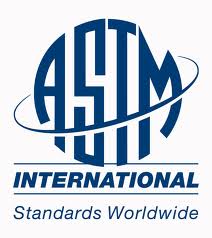 |
|
| Home > 품질규격 > 스펙- ASTM
|
 |
| |
|
| ASTM |
 |
ASTM (F1136 / F1136M)
Standard Specification for
Chromium/Zinc Corrosion Protective Coatings
for Fasteners |
1. Scope
1.1 This specification
covers the basic requirement for there grades of chromium/zinc inorganic
coatings for threaded
fasteners.
1.2 These coatings are applied
by conventional dip-spin or dip-drain methods.
1.3 The coating process does
not induce hydrogen embrittement providing that the fasteners
have not been pretreated
with an acid.
2. Reference Documents
2-1 A S T M Standards :
B117 >Test
Methods for Salt Spray(Fog)Testing
D1000 >Test Methods for Pressure-Sensitive Adhesive Coating
Tapes Used for Electrical and
Electronic
Applications
D2247 >Practice for Testing Water Resistance of
Coatings in 100% Relative Humidity
E122 >Practice for Choice of Sample Size
to Estimate a Measure of Quality for Lot or Process.
3. Classification
3.1 These coatings are classified into three grades according
to the requirements in Table 1.
Table 1 Classification of
coatings
| GradeNo. |
Chromium/Zinc
Coating Weight,(g/㎡) |
Supplemental
Coating |
Thickness,
㎛
Average |
Salt
Spray, h |
1
2
3 |
14. 0 - 17. 2
20.
4 - 23. 6
20. 4 - 27. 0 |
No
No
Clear
sealer |
5. 0 - 6. 0
6.
0 - 13. 0
7. 0 - 13. 0 |
1 4 4
2 4 0
4 0 0 |
4. Ordering Information
4.1 Orders for material under this specification
shall include the following information :
4.1.1 Quantity of parts.
4.1.2 Grade of coating.
4.1.3 Any additions to the specification as agreed upon by
the purchaser and the supplier.
5. Requirements
5.1 Appearance -The coating shall have a uniform appearance free from
tears and other
discontinuities
which may affect the appearance or performance, or both, of the coating.
5.2 Adhesion -The coating shall no evidence of blistering
or other changes in appearance after
exposure
to humidity testing for a minimum of 96 h. In addition there shall be no more
than
3.0
mm peel-back from the intersection of scribed lines that are taped tested immediately
following
a 10 min recovery period from the humidity test and there shall be no other
peeling
under
tape(see6.3 and 6.4).
5.3 Corrosion - There coatings shall be capable of withstanding neutral
salt spray testing for the
minimum
h specified in Table 1. Unless otherwise defined, acceptable corrosion resistance
shall
be where there is no base metal corrosion on significant surfaces.
5.3.1 Significant
surfaces are defined as the exposed
surfaces of the fastener when it is installed
ina
normal manner. Surfaces on which a controlled deposit ordinarily cannot be obtained,
sushas
holes, recesses, bases of angles,and similar areas are normally exempt from
therequirements
of significant surfaces.
5.4 Blister -There shall
be no signs of blisters after testing in accordance with 6.1 and 6.3
5.5 Thread Fit - The coating shall not have an adverse affect on normal
installation and removal
practices
as determined by the proper GO thread gauge. Excessive coating on the threaded
surface
may be acceptable only when the fastener passed the torque test outlined in
7.2.3.
5.5.1 The thickness> of the coating is limited by the basic thread size.
Where greater thickness is
necessary
the internal threads may be produced oversized (before coating) providing the
finished
product (after coating) meets all the specified mechanical properties. Where
mechanical
properties are not specified, over sizing is subject to the approval of the
purchaser.
6.Test Methods
6.1 Corrosion - Corrosion resistance shall be tested in accordance
with Test Method B 117
6.2 Coating Thickness> - The coating thickness may be determined by the microscopic
examinationof
a cross section taken perpendicular to the significant surface or by the
weigh-strip-weighmethod.
Note -The weigh-strip-weigh method involves weighing the
test specimen before and after the
coating
is stripped. The method requires a reagent that dose not attack the base metal.
Coating
weight must be within the ranges given in Table 1.
>6.3 Humidity
Test >- The humidity test shall be
conducted in accordance with Practice D 2247
(100%
relative humidity at 100 F (38 ℃)).
6.4 Adhesion >- Semi-transparent pressure sensitive tape with an adhesive
strength of 400 ± N/m
as tested in accordance with Test Methods D 1000 shall
be used to test the adhesion of the
coating.
The adhesive characteristic of the tape shall not change by more than 5 % of
its
mean
value within 12 months. The backing of the tape may consist of fiber-reinforced
cellulose
acetate, unplasticized poly vinyl chloride, or polyester film. When performing
the
adhesion
test the tape shall be removed from the surface of the coated specimen with
a
sharp
jerk.
7.Inspection
7.1 The purchaser may request samples in accordance
with Practice E 122.
7.2 Referee Inspection - The following referee
thread inspection may be utilized if the specified
go-gauge
binds on the bolt,nut,or screw.
7.2.1Bolt or Screws - Assemble a phosphate test nut with a
2B or 6H class thread down the full
length
of the thread.
7.2.2 Nut - Assemble a phosphate bolt or screw with a 2A or 6g class
thread for a minimum of one
diameter
through the nut.
7.2.3 The test nut,screw,or bolt must run freely for the total length
without binding. If nonuniformity
of
the coating causes difficulty in assembling the part,the coating may be found
acceptable if
it
requires no more than a torque equivalent to 0.06D N.m to assemble the part. 8. Rejection>
8.1 Materials that fail to conform to the requirements of
this specification may be rejected. |
| |
|
| |
 |
|
|


